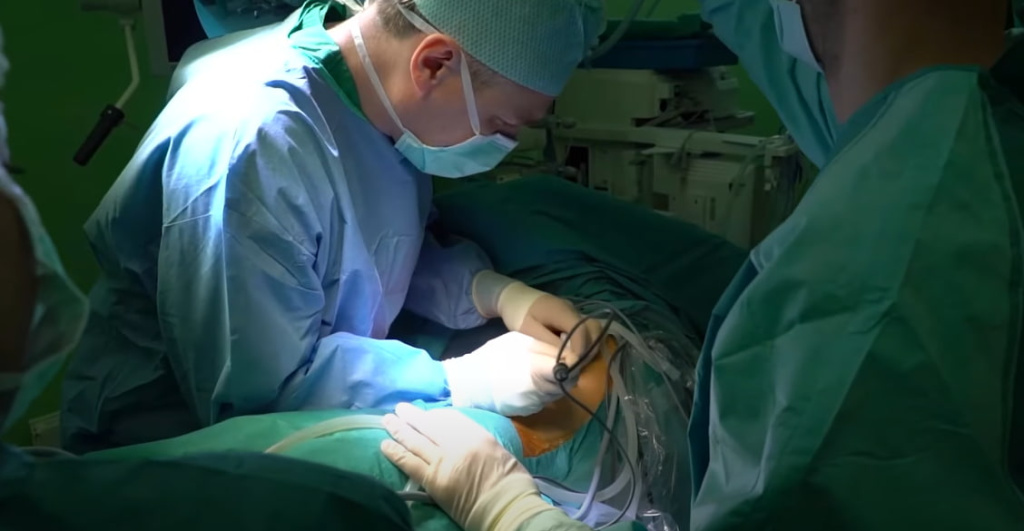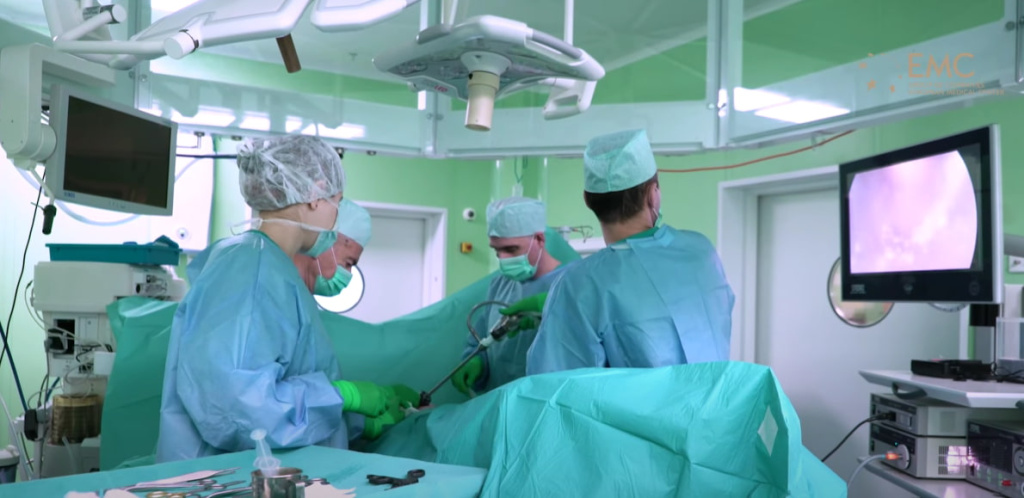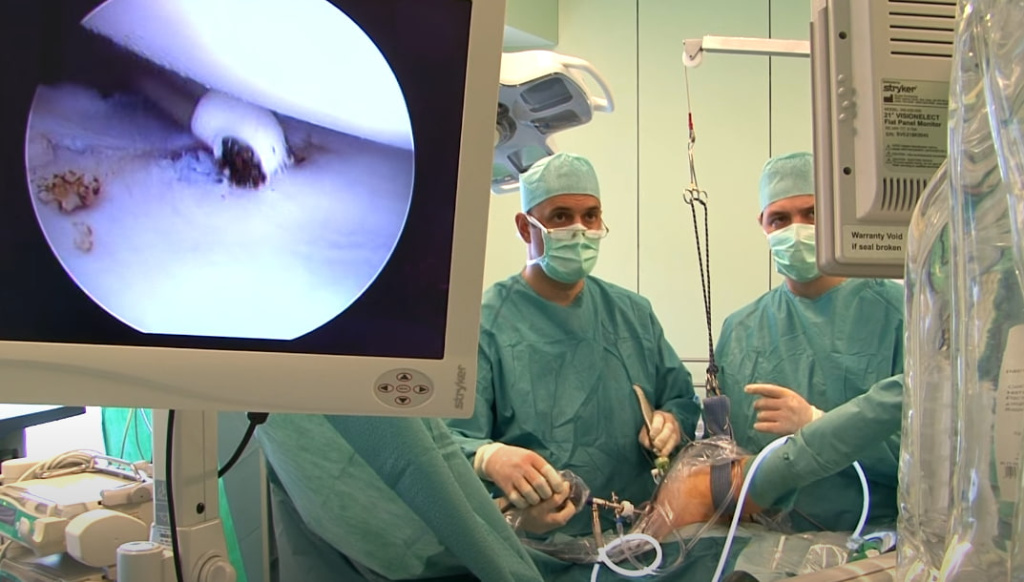Lipoma removal
Lipomas are benign neoplasms consisting of fat cells. They can be of different sizes— from a small pea to a tennis ball.
The exact cause of lipomas is still unknown. It is believed that their education can be influenced by hereditary factors, general metabolic disorders, injuries, hormonal disruptions. Some studies indicate a link between the occurrence of lipomas and the use of medications. Women face this problem more often than men.
It is important to understand that lipomas are not cancerous tumors and rarely turn into malignant ones. However, if such formations appear, it is necessary to contact a specialist for diagnosis and selection of the optimal treatment method.

Types of lipomas
These neoplasms can be of different types, and each of them has its own characteristics. Let's look at some of them:
-
Fibrolipoma: it is formed from fatty and fibrous tissues.
-
Lipofibroma: it consists of adipose tissue and fibrous elements, but unlike fibrolipoma, the fibers here are arranged more randomly.
-
Myolipoma: it is formed from fat cells and smooth muscle fibers. It usually appears in subcutaneous adipose tissue or muscles.
-
Angiolipoma: contains blood vessels.
-
Myelolipoma: It is formed from fat cells and bone marrow cells. It usually appears in the lower back or abdominal area.
-
Neurolipoma: a rare species that contains nerve fibers in its structure.
-
Hibernoma: contains inclusions of brown fat.
The type of lipoma is important when choosing surgical treatment tactics and further prognosis of the patient's condition.
Symptoms
Lipomas usually do not cause specific symptoms. Wen cells are soft, mobile balls under the skin that do not cause pain. They can form in any place where there is fatty tissue: on the arms, legs, neck, head, back, groin or armpits.
In some cases, the patient may experience unpleasant symptoms:
-
If the formation is large enough or located close to nerves or organs, it can compress them, causing pain or discomfort.;
-
Lipomas can slowly increase in size over time, which looks unsightly.;
-
lipomatosis may develop, a pathology in which a lot of fat cells form on the body.
If the lipoma has started to increase rapidly in size, the skin color above the formation has changed, or there is soreness in the lipoma area, you should contact your doctor immediately.
Indications and contraindications for lipoma removal
It is believed that fat cells do not need to be removed urgently if they do not disrupt the patient's quality of life. It is important to remember that lipomas tend to increase in size over time. This is not just an aesthetic defect — the neoplasm can compress organs, causing unpleasant sensations. Thus, the indications for the operation are as follows:
-
pain or discomfort when the lipoma is large enough or located close to nerves or organs;
-
rapid growth;
-
aesthetic imperfections;
-
the risk of degeneration (although this is rare, lipomas can degenerate into malignant formations).
Lipoma can only be removed surgically. Conservative methods in the form of medications or external remedies are ineffective in this case.
There are no contraindications to lipoma removal surgery.
The decision to remove a lipoma is made by the doctor based on the general condition of the patient, the size and location of the formation, as well as the possible risks and benefits of the operation.
How is it performed
Before the operation, the patient undergoes standard tests: general blood test for HIV, hepatitis and sugar. Soft tissue ultrasound may also be required. If the patient takes medications on an ongoing basis, suffers from chronic diseases or has blood clotting disorders, a consultation with the attending physician is required before the operation.
Removal of fat cells is usually performed on an outpatient basis under local anesthesia and does not require hospitalization. The surgeon makes a small incision and gently removes the capsule from the fatty tissue. Then the incision is sewn up, the material is sent for histological examination. The procedure usually takes about 30 minutes to 1 hour. Then the patient goes home.

Possible complications
The operation is well tolerated and does not require long-term recovery. Patients do not suffer from pain, and the scar is almost invisible. The recovery (rehabilitation) period is up to 10 days, passes easily, restrictions: exclusion of sauna, swimming pool for 10 days and limitation of physical activity on the postoperative area for 10 days. In isolated cases, postoperative complications may develop:
-
Infection. Its signs are redness, swelling, soreness, or purulent discharge from the wound.
-
A hematoma. Accumulation of blood in the cavity under the sutures usually resolves on its own.
-
Relapse. The reappearance of the wen. If the lipoma is removed radically, then there may be no recurrence (histologically, radical removal of the lipoma is confirmed).
-
The scars. A scar may form after surgery.
-
Nerve damage. If the formation was located close to the nerve fibers, they may be damaged during surgery.
To reduce the risk of complications, in the postoperative period it is important to visit a specialist in time for bandages, avoid physical exertion and overheating until the wound is completely healed.

Lipoma removal at the EMC clinic
The EMC Surgical Clinic is a modern medical center equipped according to the latest technologies in the field of diagnostics and surgery, including laser devices.
Our doctors are recognized specialists in Russia and abroad. They are able to perform a full range of surgical interventions for all soft tissue diseases, including lipoma removal .
We use advanced medical technologies for diagnosis, preoperative preparation, surgical treatment, follow-up, and rehabilitation. This allows us to shorten the length of the patient's stay in the hospital before and after surgery, making the process more comfortable for you.
Our approach to treatment is based on the principles of reconstructive medicine, which means combining maximum surgical efficiency with the ability to quickly restore organ function and the body as a whole.
It's not worth delaying your health. Make an appointment with our surgeon right now and receive professional help in the fight against lipoma.
Question-answer
How does lipoma differ from liposarcoma?
A lipoma is a benign formation formed from adipose tissue. Liposarcoma is a malignant tumor that also originates from adipose tissue, but has the potential to spread and metastasize.
Is it possible to remove a lipoma without surgery?
Sometimes a wen can disappear on its own, but this rarely happens. In most cases, surgical intervention is required.
Doctors









.jpg)





.jpg)
.jpg)
- Unique expertise is the first in In Russia, he performed laparoscopic decompression of the celiac trunk in patients with ischemic digestive system disease
- The first in In Russia, he performed laparoscopic kidney sampling during related transplantation
- He was one of the first in the world to perform suturing of a duodenal ulcer perforation
- He was one of the first in the world to perform...




